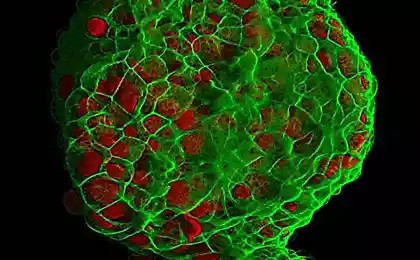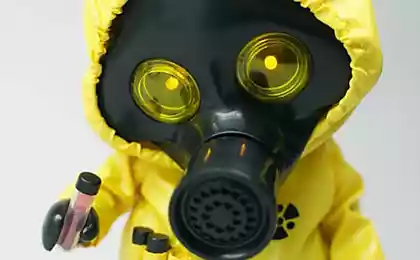469
World's first microbe zoo opens in Amsterdam

On the last day of February in Amsterdam opened the world's first interactive zoo of microbes. The new institution will introduce its visitors with the tiny creatures that make up two-thirds of all life on Earth and affect the life of our planet.
The Museum Micropia, the construction of which was spent 10 million euros, is located near the Artis Royal Zoo. The Director of the city zoo had the idea to open a Museum of the living germs for 12 years.
"Traditionally, zoos demonstrate only a small part of nature, namely the larger animals. Today we want to show you the nature at the micro level," reported Agence France Presse Director of Micropia Haig Balian.
Balian believes that we still underestimate the importance of microbes in our daily lives. People often associate these tiny organisms with the disease but they are also important for our survival, and in the future will increasingly affect the future of humanity and our planet.
"Germs are everywhere. Therefore, microbiologists are needed in each sector of the economy: for example, health care, food industry, oil industry and pharmaceuticals. If you trust the fate of this science to just a few experts, interest in it never appears. We want to show visitors that everything in nature is interconnected, and microbes are an essential part of that connection," said Balian.

Microbes are already helping to produce biofuels, develop new types of antibiotics and improve crop yields. Experiments have shown their huge potential in everything: starting with electricity and ending with the strengthening of foundations of buildings, as well as cancer treatment.
In the adult human body contains about 1.5 kg of microbes, without which we would simply perish.
The Museum is like a the lab with microscopes that are connected to huge television screens. Its visitors can observe different species of microbes living in test tubes and Petri dishes.
Animated camera will show how many tiny mites living in the eyelashes of a person. Then it will increase the viruses and bacteria on the mite.

3D microscope, specially designed for Micropia, allows to observe the growth of microbes. Visitors will also be able to see a giant model of the Ebola virus, which is now rampant in West Africa. A microbe scanner will instantly show the germs on the body of the visitor, their number and location. More daring visitors can kiss and find out how many germs are transmitted in a single kiss.
Did you know that the mouth is home to approximately 700 species of microbes, and on the heel — about 80 types of fungi? Micropia will forever change your view of the world.
Source: hi-news.ru
Elon Musk Announces Teaser for Potentially New Electric Car and ‘Something Else’
Surreal animal sculptures by Wang Ruilin























